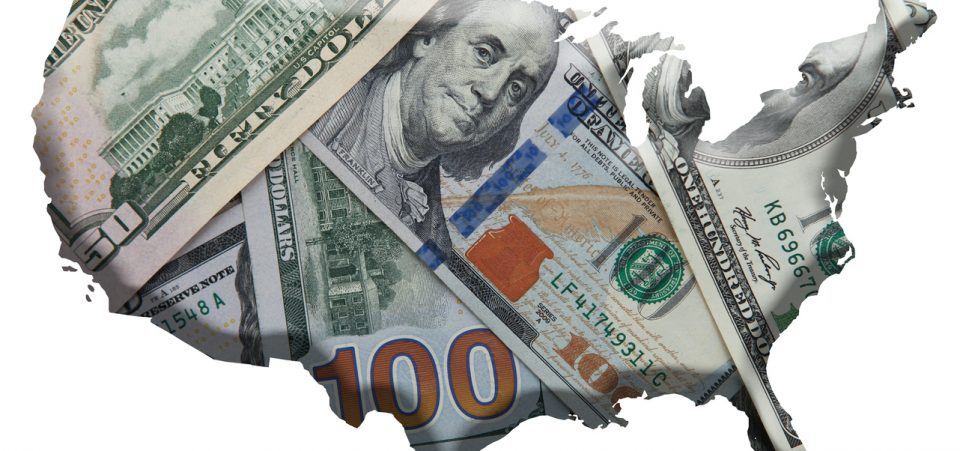U.S. National Debt Continues to Balloon
The U.S. national debt is ballooning very quickly. This won’t end well. The higher the national debt goes, the bigger the problems are going to be.
As it stands, the national debt is about $21.1 trillion. At the beginning of 2008, it was just $9.2 trillion. Simple math here: over a decade, the U.S. national debt has soared by almost 130%. (Source: “The Daily History of the Debt Results,” TreasuryDirect, last accessed April 11, 2018.)
While we are at it, in nominal terms, the United States is the most indebted nation in the world.
What’s Next for the U.S. National Debt?
Sadly, the national debt is expected to grow. Even the U.S. government’s own budget department is saying so.
The Congressional Budget Office (CBO) expects the U.S. government’s budget deficit to amount to $12.4 trillion between 2019 and 2028. (Source: “The Budget and Economic Outlook: 2018 to 2028,” Congressional Budget Office, last accessed April 11, 2018.)
Keep in mind, the $12.4 trillion is the money that the U.S. government doesn’t have. So, it will need to borrow this money. If this ends up being the actual number, one could say that the U.S. national debt could soar to over $33.0 trillion by 2028.
But, don’t get too comfortable here…
You see the budget deficit projections made by the CBO are based on current economic conditions. It doesn’t really take into account recessions, wars, or anything else like that.
The U.S. economy is looking weak. A recession could be a possibility as early as the end of 2018.
As for war, the U.S. could be entering one soon in the Middle East. Just recently, President Donald Trump threatened Syria and its ally Russia. In one of his tweetstorms, Trump said, “Get ready Russia, because they will be coming, nice and new and ‘smart!’” (Source: “Syria war: Trump says missiles ‘will be coming’,” BBC, April 11, 2018.)
By “they,” he referred to missiles.
So, if we take into account a recession, wars, and other large expenses that aren’t really accounted for, we could see the U.S. national debt figure go much higher.
U.S. National Debt Outlook: U.S. Becoming Too Big to Fail
Dear readers, I will not be shocked if the national debt actually soars above $40.0 trillion much sooner than expected.
If you listen to the mainstream media, it’s very likely that you will hear an argument that goes something along the lines of, “Soaring national debt doesn’t matter.”
Let me set this straight: in the short term, rising debt may not matter. But, in the long term, it can do a lot of damage.
Let me ask this: If the U.S. national debt ballooning doesn’t matter, how come it mattered for Greece, Ireland, Spain, Portugal, and Italy? These are the most recent examples of where national debt mattered, all of a sudden.
I suspect the day could be nearing when the U.S. creditors say, “Sorry, we can’t lend you any more money.” When this happens, it could be the end of the U.S. dollar, and it could send the U.S. economy toward a massive collapse.
With so much national debt, the United States is becoming a “too big to fail” nation. This is not good. Why? Because when the “too big to fail” actually fail, it leads to volatility, uncertainty, and massive social and economic problems.






